Did you know that the Burmese cat’s mask, also known as the “seal point”, is one of the most striking and unique characteristics of this breed? That’s right! The mask not only defines the identity of this feline, but also distinguishes it from other breeds. However, this feature is not available in all coat colors.
The warning here is simple: if you find a Burmese cat without its iconic mask, it may not be a true Burmese. It is so important to the breed that even officially recognized standards require this distinctive marking.
So the next time you see a Burmese cat with its impressive mask, remember: this is more than just a cute feature – it’s an essential part of this unique breed’s identity.
Origin and History of the Burmese Breed
The history of Burmese cats is rich and fascinating. They were initially found in Southeast Asia, where they were highly valued for their unique beauty and charming personality.
Historical Beginnings in Asia
The first historical records of Burmese cats date back centuries. They are believed to have originated in Buddhist temples in Burma, where they were considered sacred. These cats were known for their beautiful silky coats and deep blue eyes.
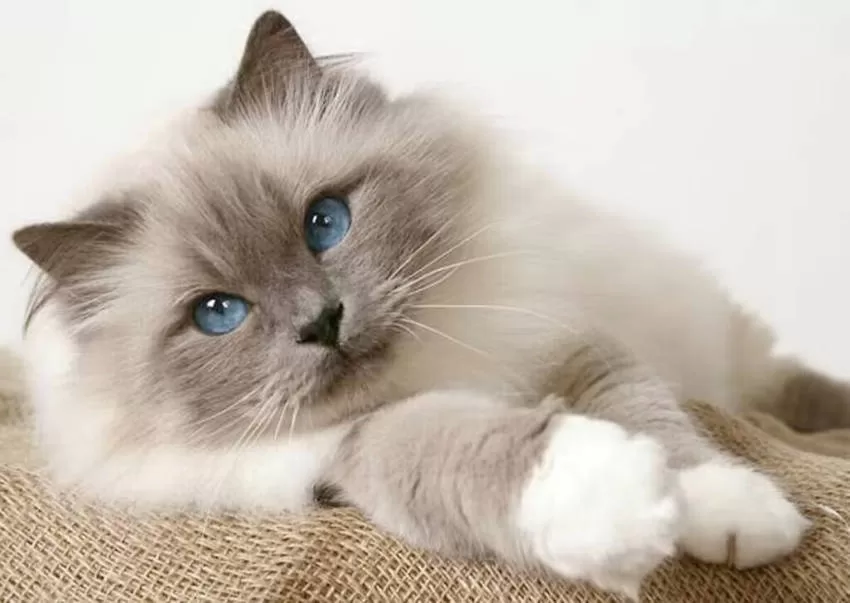
Race Evolution
Over the centuries, the breed has evolved significantly. It was during this period that the distinctive feature of the mask pattern was introduced into the breed. This unique pattern, which features a darker color on the cat’s ears, face, paws and tail, has become an iconic symbol of the Burmese breed.
Mask Pattern Introduction
The mask pattern in the Burmans was not something that occurred naturally. In fact, it has been carefully bred through years of genetic selection to produce this distinctive appearance. Nowadays, it is almost impossible to imagine a Burmese cat without its famous “mask”.
Cultural and Religious Impact
The Burmans had a significant impact on Eastern culture and religion. In many Asian cultures, they are seen as symbols of good luck and prosperity. Furthermore, Burmans are still highly revered in many religious practices in the East.
In summary:
- Burmese cats have a rich history dating back to ancient Asia.
- They have undergone significant evolution over the centuries.
- The distinctive mask pattern was introduced through genetic selection.
- The Burmans played an important role in Eastern culture and religion.
We hope you enjoyed this deep dive into the fascinating history of Burmese cats!
Distinctive Physical Features: The Face Mask
Detailed Description of the Burmese Face
The Burmese cat’s facial mask is one of its most striking features. This mask, which covers the animal’s face, is generally darker in color compared to the rest of the body. The parts involved include the ears, eyes, and the area around the mouth and nose. The contrast between the dark mask and the light fur on the body gives the Burmese a unique and distinctive appearance.
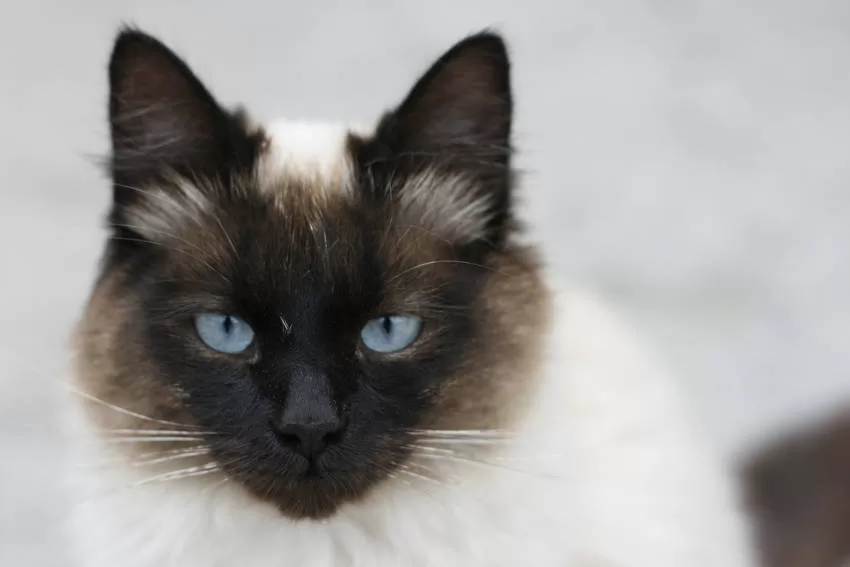
Variations in Facial Mask Color and Pattern
Variations in mask color may vary depending on the cat’s genetics. Some possible colors include:
- Point Seal: A black or dark brown mask.
- Blue Point: A blue-gray mask.
- Chocolate Point: A light brown or chocolate shade.
- Lilac Point: A gray-pink mask.
Each of these colors features a unique “mask” pattern that extends down the paws, giving the Burmese cat its characteristic appearance.
Differences Between Birmans and Other Breeds
The presence of this “mask” on the face helps distinguish Birmans from other cat breeds. While some breeds may have similar facial markings, none have the same distinct pattern that is found in Birmans.
Genetic Role in Facial Mask Formation
The formation of the facial “mask” in Birmans is the result of a specific gene known as the Himalayan gene (or point gene). This gene causes a mutation that affects the production of melanin in the cat’s fur, resulting in the characteristic dark areas – or “spots” – on the face, paws, tail and ears.
In short, the Burmese cat’s facial mask is not just a unique physical feature; it plays an important role in both visually identifying this breed and understanding its complex genetics.
Burmese Behavior and Peculiarities
Typical Personality of Burmese Cats
Burmese cats are known for their calm, affectionate, and sociable personalities. They enjoy being in the company of their owners and are usually very loyal. Unlike some other breeds, Burmese are not typically aggressive or territorial.
- They are often described as “dogs in cat disguise” because of their unique behavior.
- They love playing with children and get along well with other pets.
- They tend to follow their owners around the house, showing interest in their activities.
Specific Behavioral Tendencies Associated with the Burmese Breed
Burmese have some behavioral tendencies that are specific to the breed. For example, they generally don’t like being alone for long periods of time. Additionally, Burmese people are quite vocal and will make their voice heard if they feel their needs are not being met.
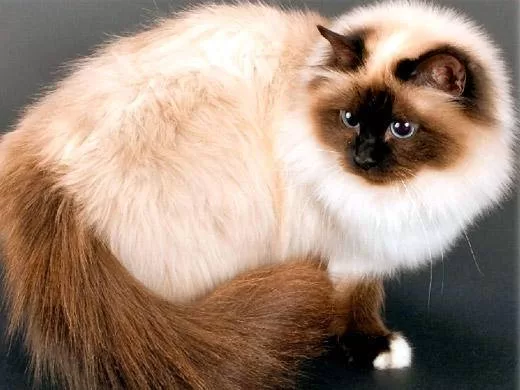
- Burmese love to explore their surroundings.
- They can also be quite stubborn at times.
- Despite their gentle nature, they can be quite persistent when they want something.
Activity Level and Exercise Needs of These Special Domestic Felines
Burmese cats have a moderate level of activity. They love to play, but they also enjoy a good nap on their owner’s lap.
- Interactive toys and scratching posts can help keep your Burmese physically stimulated.
- Regular socialization is important to maintain the mental health of these felines.
How Behavior Can Be Influenced by the Presence or Absence of the Mask
The mask in Burmese cats is a distinct physical feature that can have a subtle impact on the animal’s behavior. Although all Burmese have a dark mask on their face, the exact color can vary depending on the cat’s genetics.
- It is believed that cats with darker masks may be bolder and more assertive in their behavior.
- On the other hand, those with lighter shades may be more reserved or shy.
However, it is worth remembering that each cat is unique and these observations are generalizations based on patterns observed in the breed as a whole. Individual temperament can vary widely among members of the same breed.
Specific Skin and Coat Care
Grooming Needs of Birmans
The Burmese cat is known for its dense, silky fur. This unique feature requires special attention to maintain its natural shine. Some important points include:
- Use of specific products for Burmese’s sensitive skin.
- Avoid frequent baths which can dry out the skin.
- Maintain a balanced diet, rich in nutrients that promote skin and coat health.
Differences in Grooming Between Masked and Unmasked Birmans
The mask on the Burmese cat’s face may have a different texture than the rest of the fur, thus requiring different care. While unmasked Birmans may have a more even coat, masked ones require more gentle brushing in the mask area.
The Importance of Regular Brushing
Regularly brushing your Burmese cat’s coat is essential for maintaining skin health. This helps to:
- Remove dead hair,
- Distribute natural oils,
- Prevent knots and tangles.
Furthermore, brushing can be an excellent opportunity to check for possible skin problems.
Common Skin Problems in Birmans
Cats of this breed may present some specific skin conditions such as:
- Allergic dermatitis: caused by allergic reactions to certain substances.
- External parasites: fleas or ticks can cause skin irritation.
- Hormonal problems: hormonal imbalances can affect the health of the skin and coat.
Always remember that when identifying any change in your pet’s skin or behavior, the ideal is to seek out a trusted veterinarian for proper evaluation and treatment if necessary.
In short, expert skin and coat care is essential to keeping your Burmese cat healthy and looking radiant. Understanding the specificities of this breed allows us to offer the best possible care, thus guaranteeing the well-being of this very special feline.
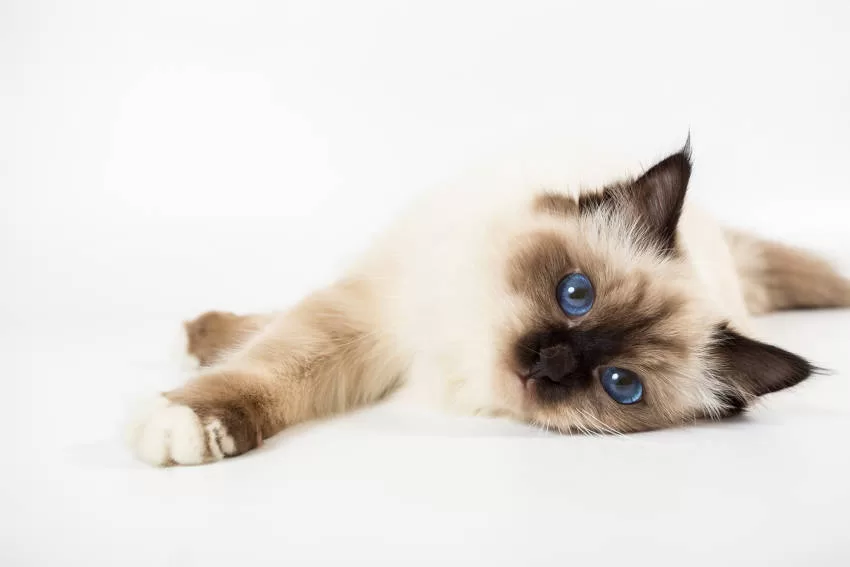
Use of Moisturizing Masks in the Breed
Benefits of hydrating masks
The use of moisturizing masks on Burmese cats, whether masked or not, brings numerous benefits. For starters, it gives an extra shine to the breed’s coat, which is already naturally golden and beautiful. Additionally, it helps keep the skin under the coat healthy and hydrated.
- Keeps ears and other sensitive areas protected
- Prevents itching and peeling
- Increases hair softness
- Helps untangle knots
When to use cosmetic products
The ideal frequency for applying these products depends largely on the condition of the cat’s coat. However, a good rule of thumb is to use them weekly.
- During the shower: After washing with shampoo, apply the mask.
- Let sit for a few minutes.
- Rinse well to remove all the product.
Treatments available on the pet market
There are several types of treatments available on the pet market:
- Moisturizing masks: ideal for all Birmans, especially those with dry or damaged coats.
- Conditioners: useful for keeping the hair soft between mask applications.
- Shine sprays: perfect for giving the coat a final touch after drying.
Type | Ideal for |
|---|---|
Moisturizing Masks | Dry/Damaged Coat |
Conditioners | Regular Maintenance |
Shine Sprays | Finishing |
Precautions when applying these products
When using these products on your animals, always remember:
- Avoid contact with eyes and the inside of ears.
- Only use products specifically designed for pets – many human cosmetics contain ingredients that are toxic to them.
- Follow the manufacturer’s instructions on how much product to use and how long to leave it on.
Hey! Did you know that males tend to have thicker hair than females? This might mean they need a little more product!
Whatever the color of your Birman – be it chocolate or anything else – one thing is certain: a good skin and coat care routine will make all the difference in his health and appearance.
Benefits of Ojon Monoi Ibasa Restorative Mask
If you are the owner of a Burmese cat, you know that the fur of these animals is one of their most striking characteristics. And to keep that hair healthy and shiny, the Ojon Monoi Ibasa Restorative Mask can be your great ally.
Advantages Specific to Birmans
- Promotes intense hydration: The formula of this product was developed to penetrate deeply into your cat’s hair, providing intense and long-lasting hydration.
- Enhances natural color: In addition to restoring damaged hair, this mask also helps to enhance the natural color of your Birman’s fur.
- Protects against future damage: By strengthening your cat’s hair, this mask also helps protect against possible future damage.
Active Ingredients
Ojon Monoi Ibasa Restorative Mask contains active ingredients such as:
- Ojon Oil: Known for its restorative properties, this oil helps repair damaged hair and prevent further damage.
- Monoi Extract: This extract is rich in nutrients that deeply nourish and moisturize your cat’s hair.
Positive Testimonials
Many Birman owners have already tried this mask and report positive results. See some examples:
“Since I started using this mask on my Birman, I’ve noticed a huge difference in the quality of his hair.” – John S.
“My cat loves the smell of this mask! And I love how soft and shiny her fur feels afterwards.” – Maria P.
How to Apply Correctly
To get the best results with this restorative mask, follow these steps:
- Wash your Birman’s coat with a mild shampoo.
- Apply a generous amount of the mask throughout the animal’s hair.
- Leave it on for 10 minutes before rinsing well.
Always remember to avoid contact with the animal’s eyes during application.
With all these benefits and positive testimonials, there is no doubt that the Ojon Monoi Ibasa Restorative Mask is an excellent option for keeping your Birman’s coat healthy and beautiful!
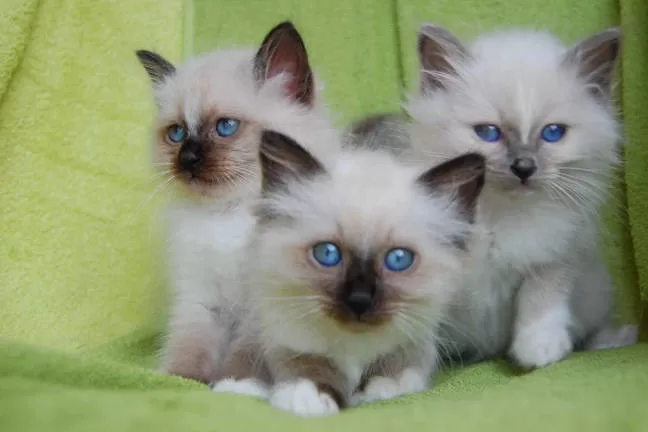
Conclusion on the Burmese Cat Mask
So there you have it! Now you know everything about the Burmese cat breed and its distinctive facial mask. These cats really are something special, aren’t they? And with the right care – especially with their skin and coat – they will rock! Don’t forget the moisturizing and restorative masks to keep your feline friend healthy and beautiful.
Now that you’re up to date on the subject, how about considering adopting a Burmese kitten? It’s going to be quite an adventure, you can bet! And remember: if you have any questions or needs, we are here to help!
What is the origin of the Burmese cat breed?
The Burmese cat breed has its origins in Burma. It was brought to Europe at the beginning of the 20th century.
What makes the Burmese cat’s face mask so distinctive?
The Burmese cat’s facial mask is a unique genetic characteristic of the breed. It is a dark marking on the face that contrasts with the rest of the light coat.
What is the specific care for the skin and coat of Burmese cats?
Burmese need regular brushing to keep their coat in good condition. Additionally, they can benefit from moisturizing and restorative masks.
How do hydrating masks benefit Burmese cats?
Moisturizing masks help keep Burmese skin hydrated and healthy, preventing problems such as dryness and irritation.
What is Ojon Monoi Ibasa Restorative Mask?
It is a product specially developed to care for the skin and coat of pets. It has natural ingredients such as ojon and monoi oil that help repair damaged hair.
External Links:

